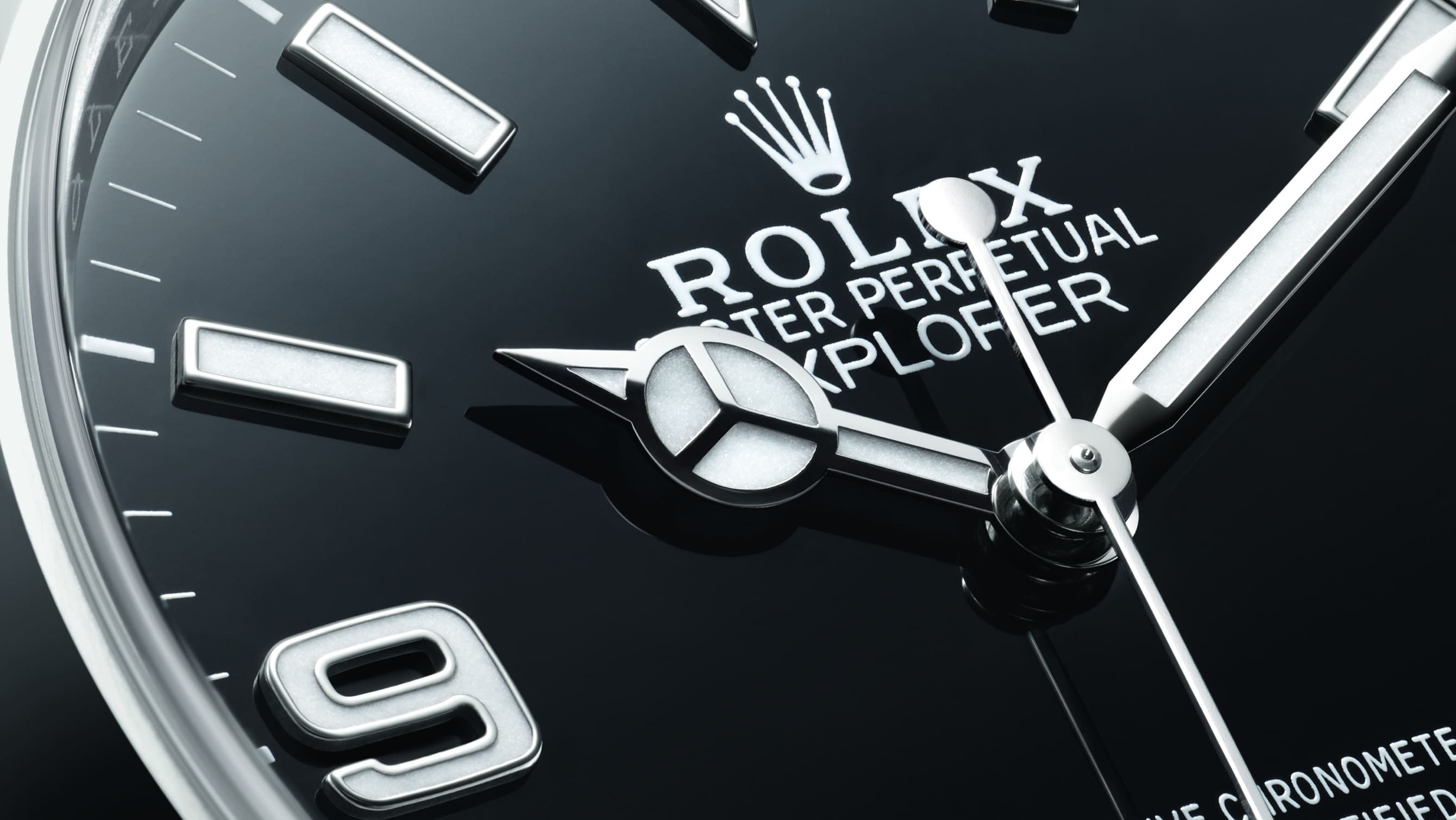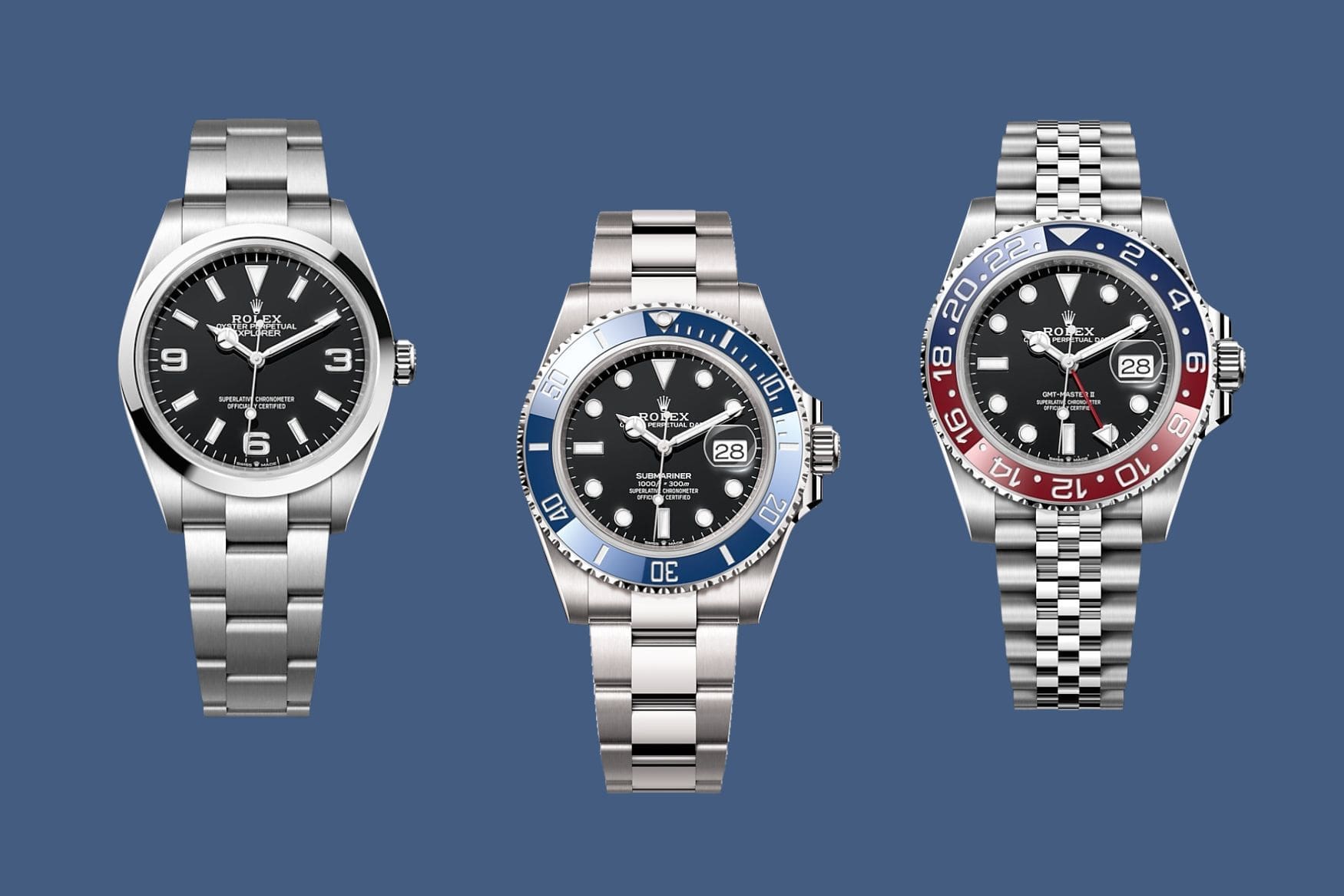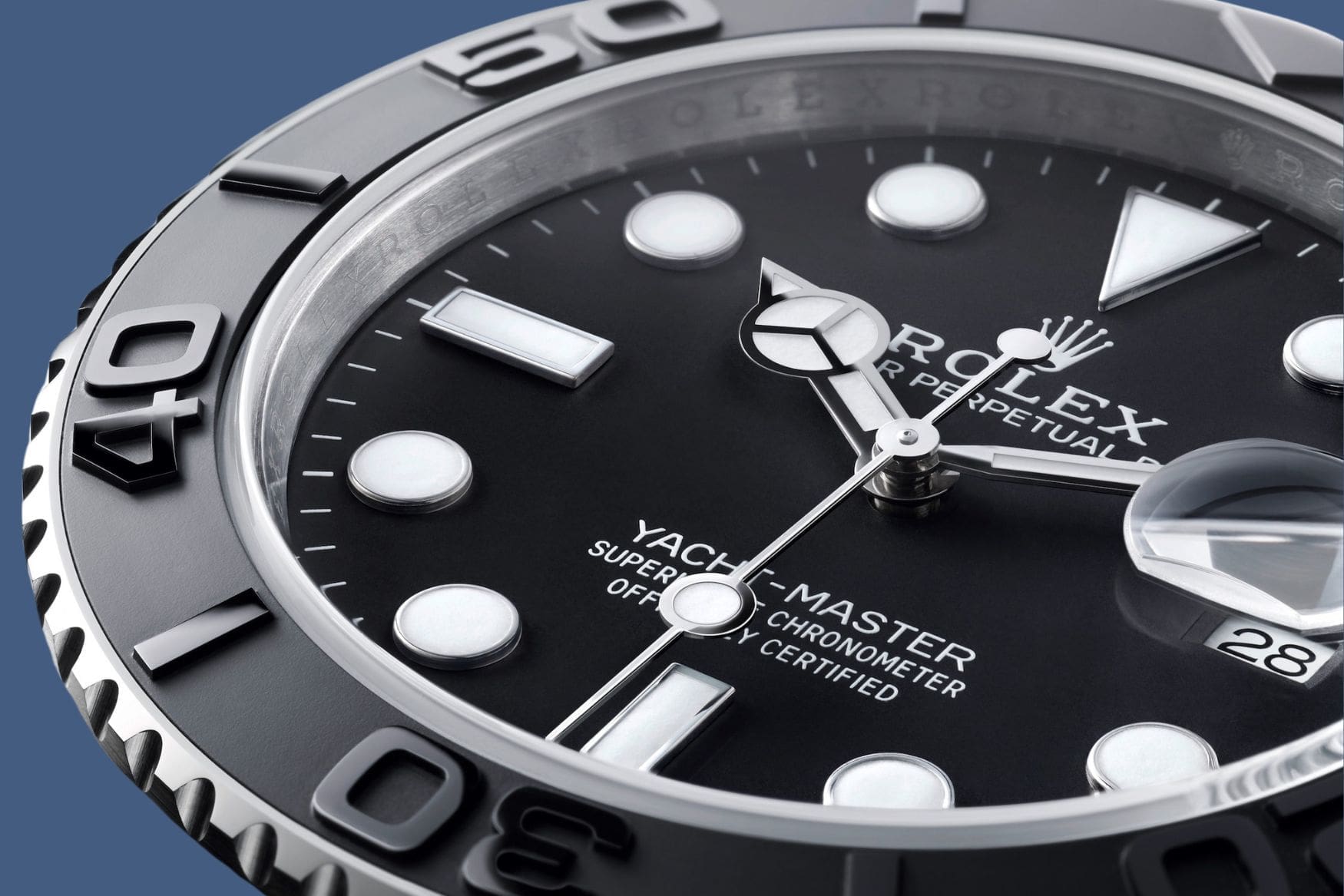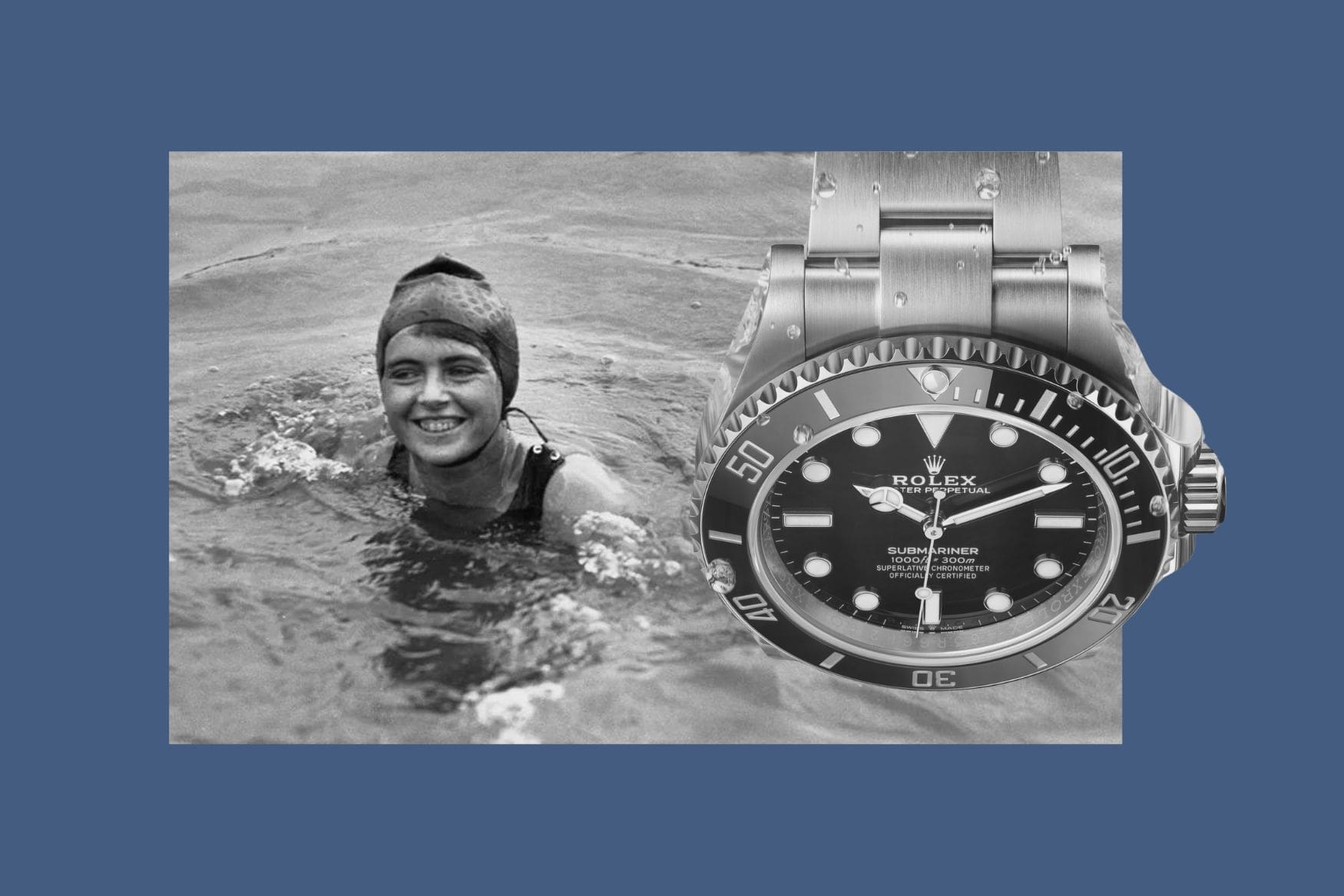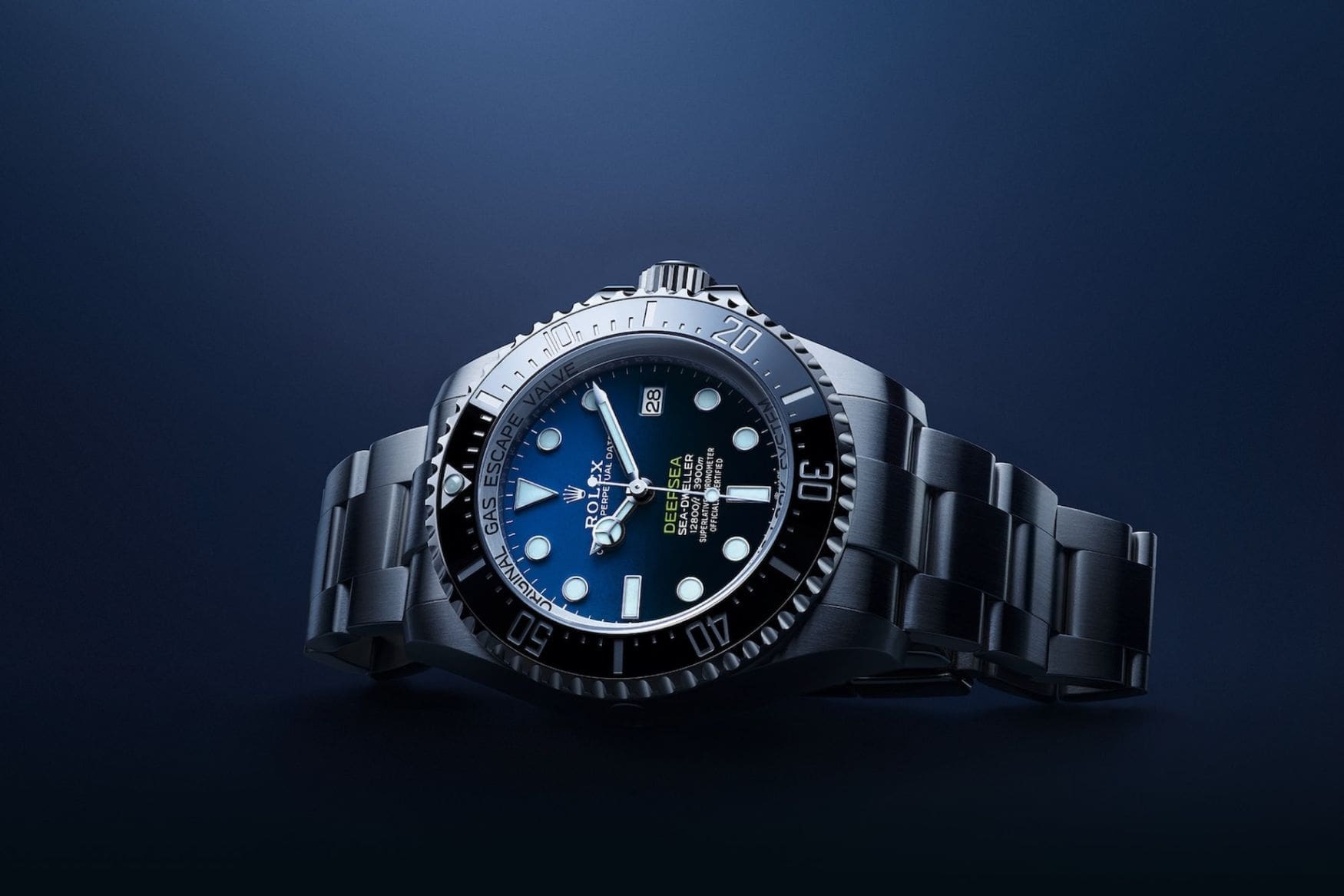What’s the story behind Rolex’s iconic “Mercedes” hands?
Cate MisczukRolex’s “Mercedes” hour hands are an icon of the brand. Used on all of the company’s Professional line of watches (except for the Daytona), these hands are intricately tied to the design language and functionality of Rolex’s sports watches.
But for something so well-known and associated with the brand, I found that there’s actually a lot of shrouded mystery around where the idea for these watch hands came from. For one, I started poking around and realized that Rolex typically refers to the hands as “Mercedes-style hands” in technical documentation or descriptions. Rather than just outright calling them Mercedes hands like the rest of us do, Rolex tends to be more generic, focusing on the functional aspects of the hands rather than drawing attention to any external associations.
I wondered, is this a weird copyright thing? Or is this all just a coincidence? However, upon further investigation, it turned out that there are a few different theories as to where the origin of the hands came from. And in an unhelpful turn of events, Rolex has yet to confirm or deny any of it. So, I thought let’s take you all down this rabbit hole with me.
The land, sea and air “three-pointed star” theory
The first common theory suggests that Rolex chose this three-pointed star symbol to represent the brand’s successful conquest of land, sea and air – and while that has been indeed done today with the Rolex Explorer (land), Submariner (sea), and GMT-Master (air), this theory just doesn’t hold up to the history books. When the first Mercedes hands were used by Rolex, they appeared on the Explorer ref. 6150 in 1953. That same year Rolex released the Submariner ref. 6204, but they wouldn’t release the GMT-Master until a year later in 1954. You could say there was some foreshadowing, but I just don’t buy it.
Interestingly, if you’ll let me go on a small tangent, is the fact that the first Rolex Submariners didn’t have Mercedes hands upon their first release, despite the Explorer having them that very year. Not only are the Mercedes hands tied intricately with the design language of the Submariner today, but the hands are actually linked closely with the entire dive watch market, being found on 60% of all dive watches. The first hands on the Submariner featured pencil-style hour hands with “lollipop” and “big bubble” minute hands. However, I will backtrack a bit and say there are some rare examples of the later 1953 ref. 6204 with the Mercedes hour hand – but these are definitely thought to be later and not the norm for that reference.
The cathedral hands theory
My favourite theory is that the Mercedes hands evolved out of a famous style of hands called “cathedral” hands. Reminiscent of the pointed arches seen in Gothic cathedrals, these hands are defined by their broad base that tapers to form a pointed arch-like shape at the tip. Look closely and you’ll see that the lines in the middle create three open spaces, similar to the three open spaces you see formed by the Mercedes star symbol.
But how did we go from this to that? Well, part of the reason cathedral hands became so popular was because of their readability. The unique shape was easy to see as it swung around the dial, allowing the reader to quickly check the time. Popular in the 1920s and 1930s, and already being used on military watches at the time, I can understand the theory that Rolex wanted to put their own spin on the trending style, creating something bigger, bolder and even easier to read as they began releasing new sportier watch models.
The nod to Mercedes Gleitze theory
If you know anything about early Rolex history, you know that swimmer Mercedes Gleitze is a huge part of the company’s early marketing efforts and successes. As the company’s very first brand ambassador in 1927, Mercedes wore a Rolex Oyster around her neck for ten hours as she swam the English Channel. The swim was not only a success for Mercedes, but for Rolex, as it illustrated the reliability and waterproofness of the Oyster case – so much so that the brand is practically built upon that entire reputation today.
So, the prevailing theory is that as Rolex began releasing more sports watches, their Mercedes hands were a nod to Mercedes herself and the enduring wake of her successful swim with the Oyster case. However, this feels like a stretch to me. The Mercedes hands got their moniker by looking like the Mercedes-Benz logo. So the idea that Rolex copied this symbolism as a round-about nod to Mercedes Gleitze just doesn’t make sense to me.
The founder’s tribute to Germany theory
My least favourite theory of them all that’s out there is that Rolex’s German founder Hans Wilsdorf implemented the Mercedes hands as a tribute to his native country. Not only did Wilsdorf first establish the company in England, but he later moved the company to Switzerland, meaning Rolex never had any real ties with Germany at all. Yes, Mercedes-Benz was incredibly popular for their luxury cars when the hands were first released.
But why make your tribute to your home country via another company’s logo? Wilsdorf was known for his innovation and paving the way forward. So it seems unlikely he’d want to ride on the coattails of another brand. Plus, you have to remember that in the 1950s, the wounds of WWII were still fresh, and I doubt Wilsdorf would have wanted to make that kind of overt nationalistic tie to Germany.
The unsolved mystery
There’s no real conclusion to this story because Rolex has yet to actually confirm anything, and it’s doubtful they ever will. But, I think it’s clear which theories are more plausible than others. Either way, I bet now you’ll take a second look at your Mercedes hands next time you glance down at your Rolex.




